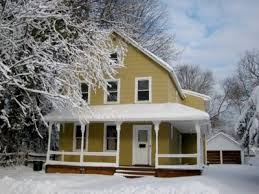
Breaking News
 Gen. Flynn Trump Seeking $50 Million Over Election Fraud Case – Report
Gen. Flynn Trump Seeking $50 Million Over Election Fraud Case – Report
 Beginning Of A Revolution? Populist Revolt Shocks Mexico
Beginning Of A Revolution? Populist Revolt Shocks Mexico
 From Britney To Charlie. With Pastors Like These, Who Needs Enemies? | Candace Ep 265
From Britney To Charlie. With Pastors Like These, Who Needs Enemies? | Candace Ep 265
 Friday Night Meltdown: Trump Yanks MTG Endorsement, Mocks Massie's Remarriage...
Friday Night Meltdown: Trump Yanks MTG Endorsement, Mocks Massie's Remarriage...
Top Tech News
 New Gel Regrows Dental Enamel–Which Humans Cannot Do–and Could Revolutionize Tooth Care
New Gel Regrows Dental Enamel–Which Humans Cannot Do–and Could Revolutionize Tooth Care
 Researchers want to drop lab grown brains into video games
Researchers want to drop lab grown brains into video games
 Scientists achieve breakthrough in Quantum satellite uplink
Scientists achieve breakthrough in Quantum satellite uplink
 Blue Origin New Glenn 2 Next Launch and How Many Launches in 2026 and 2027
Blue Origin New Glenn 2 Next Launch and How Many Launches in 2026 and 2027
 China's thorium reactor aims to fuse power and parity
China's thorium reactor aims to fuse power and parity
 Ancient way to create penicillin, a medicine from ancient era
Ancient way to create penicillin, a medicine from ancient era
 Goodbye, Cavities? Scientists Just Found a Way to Regrow Tooth Enamel
Goodbye, Cavities? Scientists Just Found a Way to Regrow Tooth Enamel
 Scientists Say They've Figured Out How to Transcribe Your Thoughts From an MRI Scan
Scientists Say They've Figured Out How to Transcribe Your Thoughts From an MRI Scan
 Calling Dr. Grok. Can AI Do Better than Your Primary Physician?
Calling Dr. Grok. Can AI Do Better than Your Primary Physician?
How To Heat Your Home With Solar Heating

But adding solar heating isn't always all that easy, especially when that home wasn't designed with solar in mind.
When most people talk about solar heated homes, they're referring to passive solar. In a nutshell, passive solar works by the principle that dark colors absorb light. Since light is energy, the law of the conservation of energy tells us that the light must be converted to some other form of energy. This naturally occurs by converting the sunlight into heat. So, as long as a home is designed with enough windows, a good absorber and sufficient thermal mass, a passive solar heating system will work.
Unfortunately, not all homes lend themselves to passive solar heating. While many can be adapted to receive some benefit from passive solar, there are some with designs or locations that make it cost-prohibitive to modify them for passive solar.

 Unbanked In A Connected World
Unbanked In A Connected World

